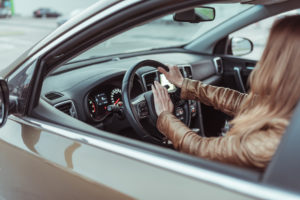Accidents can occur in the blink of an eye due to various factors. Driver distraction and alcohol consumption often feature prominently in the media due in part to the fact that they are apparent contributors to many accidents and something that many drivers can take action to stop. However, one common cause of fatal collisions often fails to gather as much attention, perhaps because it occurs so commonly: speeding.
According to the NHTSA, speeding plays a role in at least 29 percent of fatalities on the road. Paying careful attention to speed while on the road can go a long way toward reducing the risk of accidents and helping to keep drivers, pedestrians, and cyclists safer. Unfortunately, many drivers fail to exercise that caution.
If you are suffer for speeding accident then contact Bronx car accident lawyer for help.
The Problem With Speeding
Many people do not think twice about speeding when they get behind the wheel. They may feel perfectly confident in their driving abilities or think they know the road they have chosen well enough to navigate safely despite high rates of speed. However, speeding can cause several key problems.
Speeding Makes Controlling a Vehicle More Difficult
A driver must have much faster reflexes when driving at high rates of speed than a driver traveling at a slower pace. As speed increases, a driver has to react faster to everything: turns in the road, potential hazards, and the actions of other drivers. A driver must always keep full attention on the road to prevent collisions. Unfortunately, even with eyes on the road, speeding drivers may have difficulty safely keeping their vehicles on the right track and avoiding other drivers.
At High Rates of Speed, It Takes a Vehicle More Time To Come to a Complete Stop
Many drivers rely on stopping their vehicles quickly if an emergency occurs when out on the road, such as when a pedestrian steps out into the street, a car pulls out in front of them, or they see a changing traffic light.
A speeding vehicle may take much longer to stop than anticipated. At 80 miles per hour, it takes almost twice as long to stop a speeding vehicle as it does to stop the same vehicle traveling at 60 miles per hour. That high rate of speed can make it impossible for drivers to avoid a collision.
Heavy vehicles, including SUVs and big trucks, may have an even harder time coming to a complete stop. Because the vehicle has more weight behind it, the driver may need more time to reduce speed and avoid a collision. Driving at high rates of speed prevents a driver from safely completing that maneuver.
Speeding May Increase the Damage Caused in an Accident
Speed increases the force behind an object, leading to increased damage when an accident does occur. That means that the passengers in an accident involving a speeding vehicle are more likely to suffer severe injury or death compared to the same type of collision at a slower rate of speed.
When drivers speed, the vehicle generally hits with greater force even if the driver tries to slow down or avoid the collision. That force is distributed through the vehicle, causing broken bones and bruises to head, back, and neck injuries.
Why Drivers Speed?

Drivers may choose to speed for various reasons, even when they know the risks.
1. Drivers Often Speed to Get to Their Destinations Faster.
When it comes down to it, drivers most often speed because they want to get to their destinations faster. They may have gotten caught in traffic earlier in the journey and want to compensate for the lost time. They may have started behind and hoped that speeding would get them to where they needed to be faster. They may want to spend less time on the road and so increase their rate of speed in an effort to get to their destinations more quickly.
Logically, speeding may not actually decrease time spent on the road. For speeding to help drivers reach their destinations faster, they may need to speed long enough for it to prove worthwhile. Over the course of an hour, increasing speed by 10 miles per hour may shave 10 minutes off the time behind the wheel.
That assumes, however, that the driver will avoid common challenges and slowdowns on the road. But drivers will still have to stop at traffic lights and go through traffic jams at the same speed as any other driver, hence speeding may not result in them getting to their destination any faster.
2. Some Drivers Speed Because They Enjoy the Thrill.
For some drivers, speeding offers an increased challenge as they take to the road. Hitting higher rates of speed may mean that the driver has to work harder and keep more attention on the road to control the vehicle safely.
Similarly, some drivers choose to speed because they enjoy that thrill and assume nothing negative will come out of it. Speeding for the thrill can end in catastrophe, though. Over time, drivers may have a more challenging time getting the same thrill from a rate of speed that once increased that adrenaline rush and made them feel excited behind the wheel. Drivers may, as a result, increase speed more and more, further increasing the risks that accompany it. Eventually, drivers who speed regularly may get involved in a serious accident.
3. Drivers May Speed Because of Road Rage.
Sometimes, drivers may choose to increase their speed out of rage or frustration. For example, a driver might start speeding after getting caught in a traffic jam, despite knowing that he may not actually make up for the lost time. Other drivers may grow frustrated with the behaviors of others on the road and drive faster to get around them.
Drivers may feel that speeding releases some of their frustration. They may speed up to cut off a driver who has engaged in reckless or discourteous behavior around them, or they may choose to speed to get away from a driver who seems to be causing problems on the road. While those decisions may alleviate some immediate frustration, they may create further problems.
4. Drivers Often Speed Because They Feel They Can Handle It.
Speed limits on most roads serve as the maximum safe speed drivers can travel down those roads. However, many drivers feel that speed limits should not apply to them.
About 73 percent of drivers think they drive better than the average. Unfortunately, that means a lot of drivers, statistically speaking, do not drive better than average and may engage in riskier behaviors while lacking the skills to control their vehicles safely.
Drivers may also grow overconfident on familiar roads. They may travel those roads regularly, making them feel they can handle those roads at higher rates of speed. But they may be unable to avoid potential dangers at those high speeds, especially if they involve the actions of other drivers, pedestrians, or cyclists on the road. As a result, those drivers can end up involved in devastating collisions.
5. Drivers May Speed Up Due to Overall Complacency and Lack of Attention.
Often, speed creeps up over time without drivers fully realizing it. Road haze can set in, especially on long road trips. Drivers may stop paying attention to everything that takes place on the road around them, including their rate of speed, and allow themselves to zone out. They may feel increasingly comfortable on the road and allow their speed to creep up more and more over time. Throughout a long trip, that can mean an increasingly fast speed limit, which may, in turn, lead to increased accident risk.
6. Some Drivers Speed Due To Perceived Social Pressure.
Despite clearly posted signs, drivers naturally travel considerably faster than the speed limit on many roads. Cars may rush by and a driver unfamiliar with the road or who does not feel comfortable driving at those speeds, in general, may still feel pressured to keep up that rate of speed. Discomfort and an overall lack of familiarity or skill may increase the risk that a driver will end up causing an accident.
7. Drivers May Speed Because They Are Unaware of the Speed Limit on a Particular Road.

Fatal Accident Lawyer, Andrew Finkelstein
Most roads have clearly posted speed limits that dictate the maximum safe speed for cars traveling on those roads. However, in some cases, drivers may need help seeing those signs or might have yet to access the road at a point where they could see them. As a result, they may choose a comfortable rate of speed on their own or continue at the pace they used before turning onto that road.
Drivers may be surprised by turns in the road, hidden intersections, driveways, or unexpected pedestrian traffic. That lack of knowledge, unfortunately, may increase the risk that they will end up involved in a serious collision.
Contact an Attorney After a Collision Involving Speeding
Suppose you suffered injuries in an accident involving a speeding driver. In that case, an attorney could give you a better idea of what compensation you deserve and how you can pursue that compensation. A lawyer can also walk you through what to do if you know that you traveled over the speed limit at the time of the accident and provide more insights if you had an accident with a speeding driver.
Contact a lawyer as soon as possible to learn more about your rights and how to file a claim.
